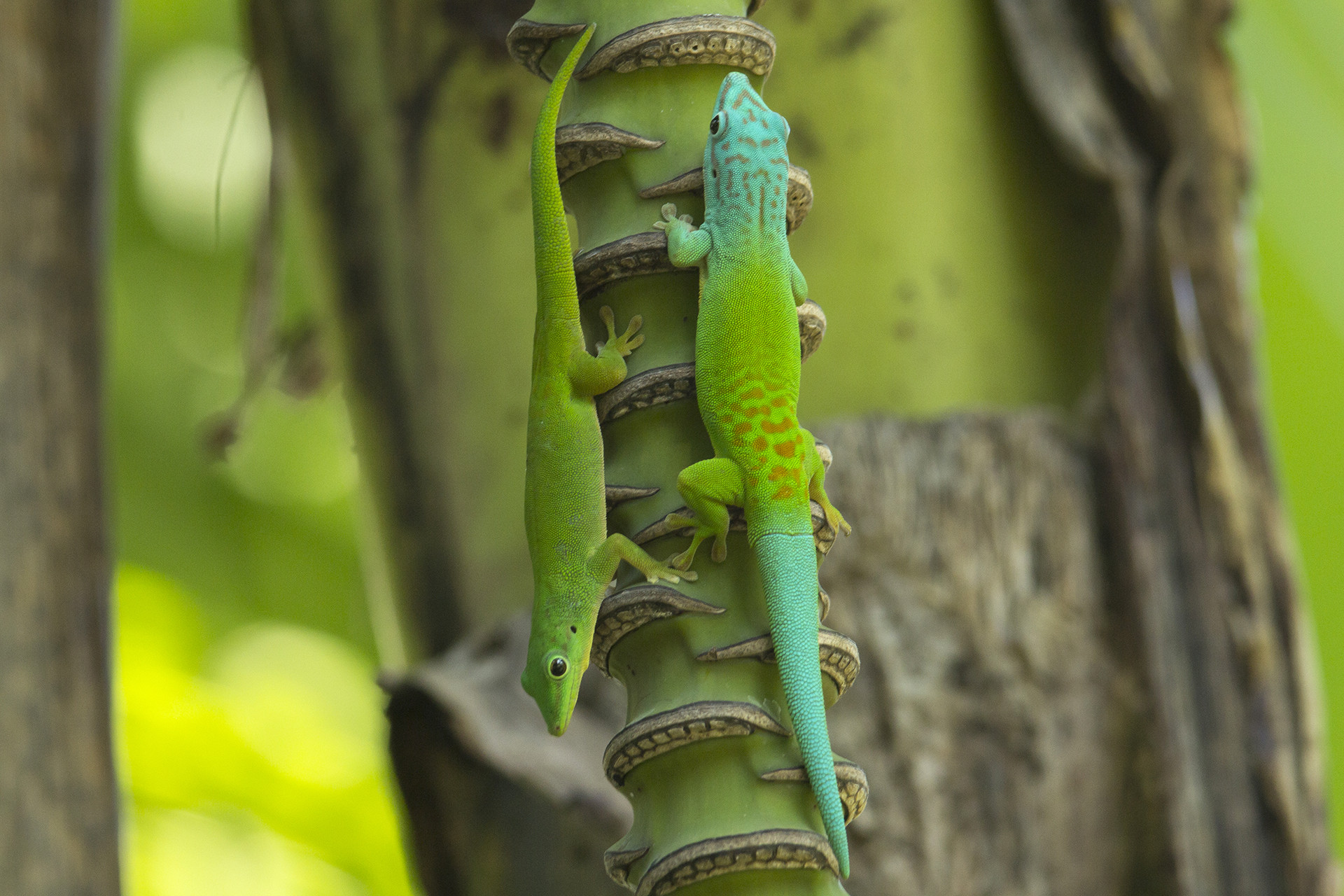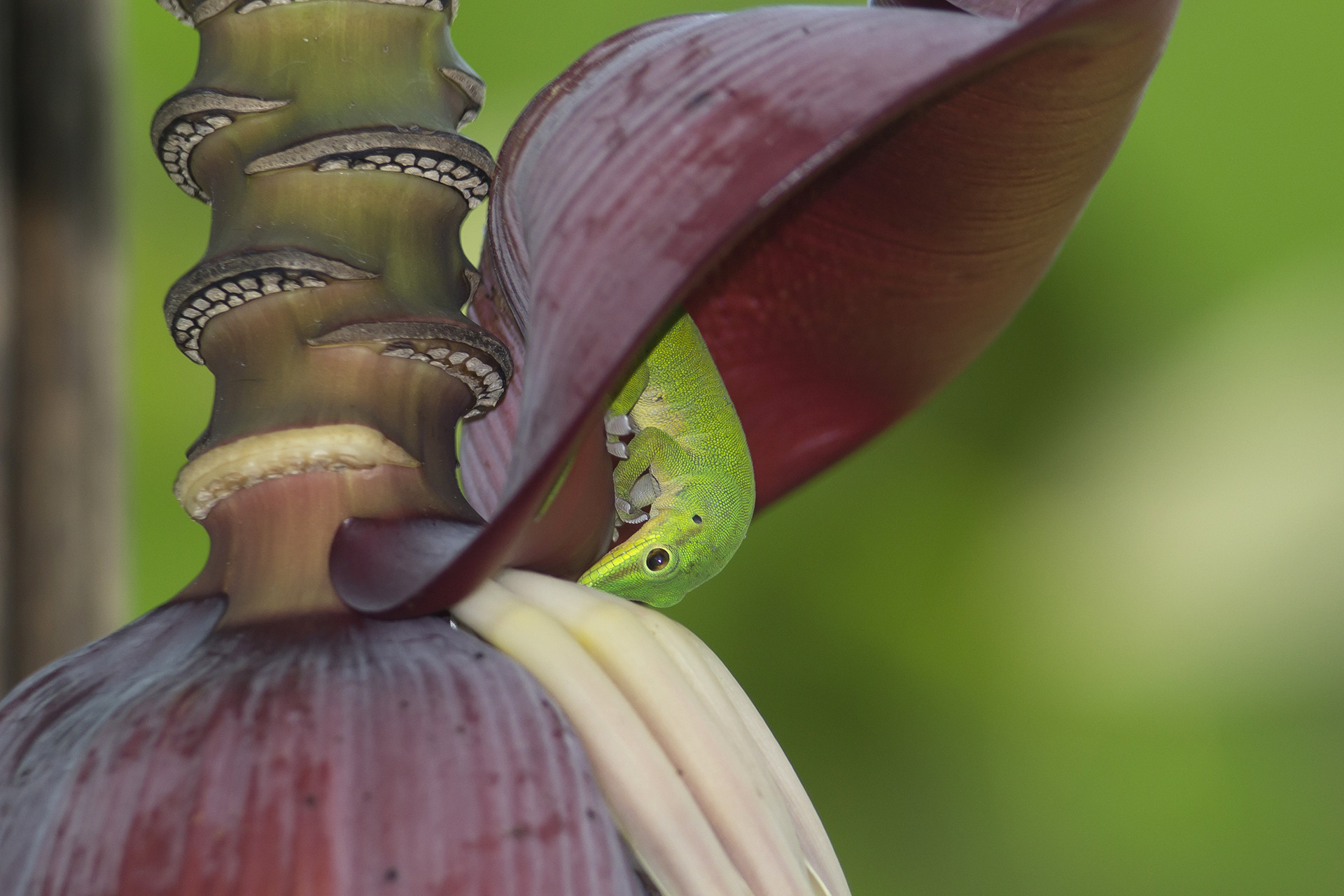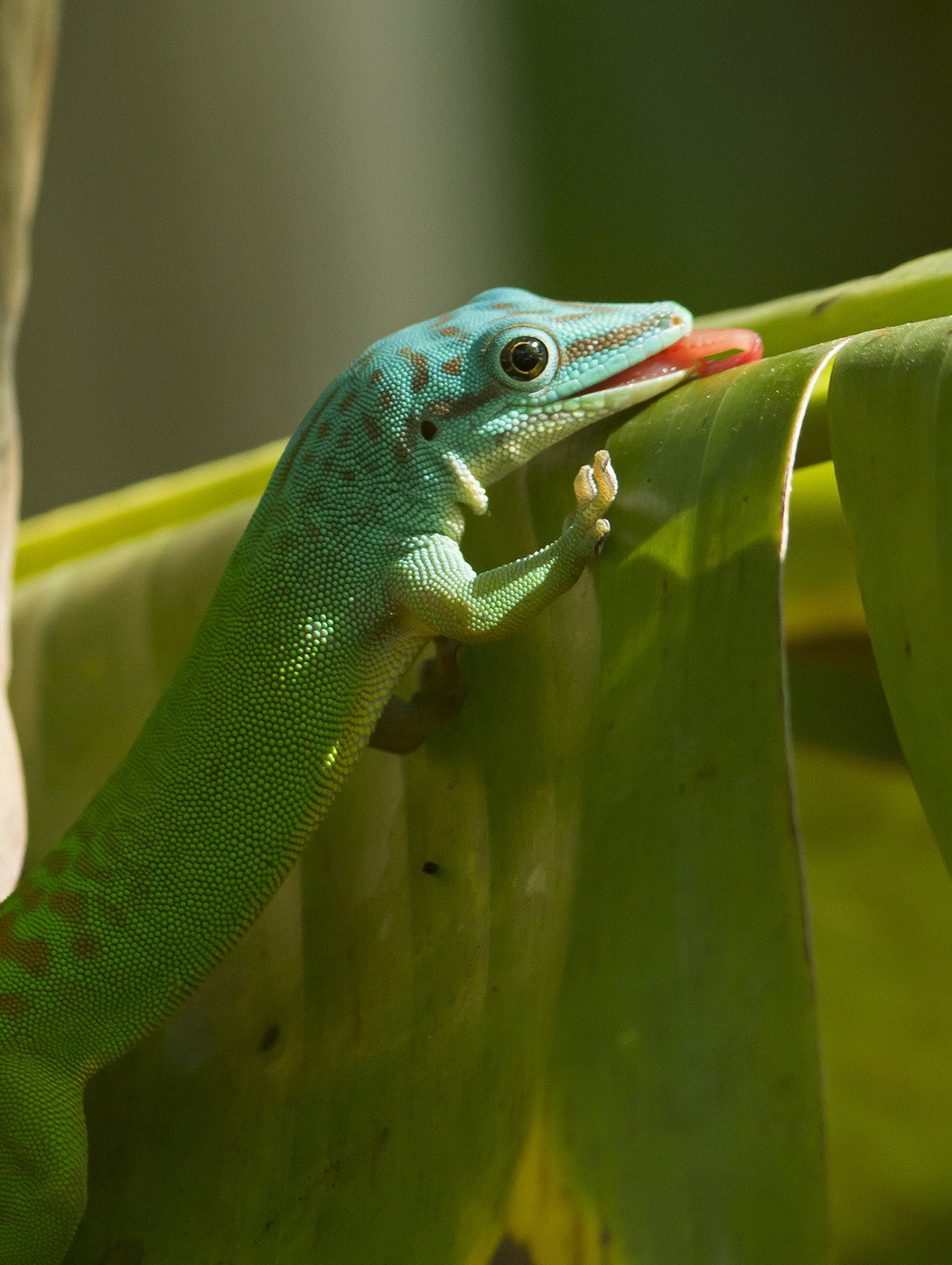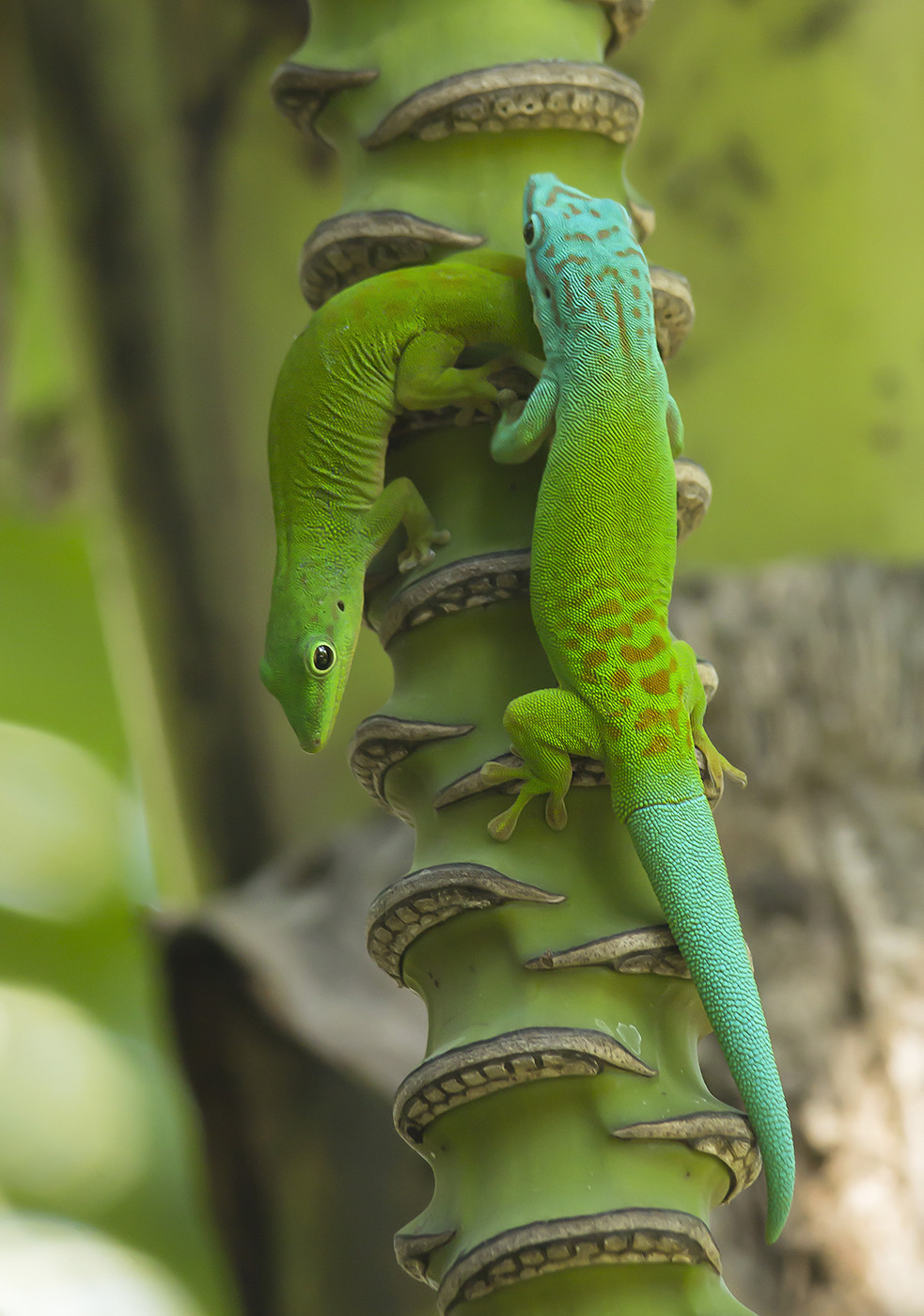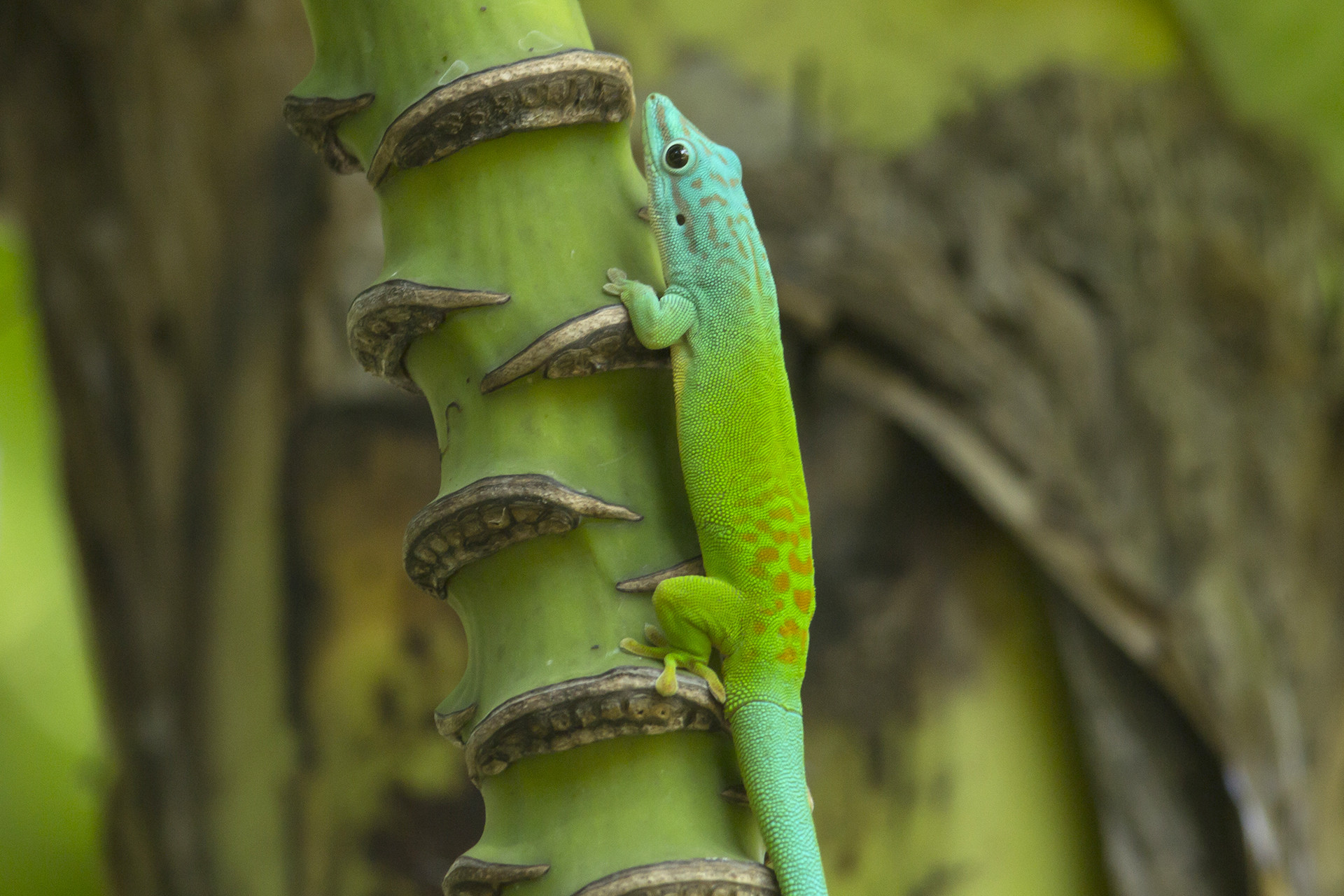Far away from mainland India, on a chain of islands closer to Burma, lives a little gecko that defies one’s fear or disgust of the velcro-footed, galaxy-eyed nightmare that lives behind photo frames and cupboards. A leafy green body with a yellowish underbelly, and an aquatic blue tail and head in males with mild blotches of red – the Andaman Day Gecko leaves you spellbound from the very first time you lay eyes on it.
Due to their green colouration, the geckos blend in seamlessly with the beautiful primary rainforests of the islands. If it weren’t for their ability to adapt to anthropogenic disturbances, they would be one of those gorgeous creatures whose secretive lives we could only observe on blue-chip documentaries. But these geckos have adapted to living on banana plants, coconut trees and araika palms found in gardens or small clumps along the roadside. Staying close to human habitation has probably sharpened their reflexes; the slightest bit of disturbance and they make a smooth getaway, either behind the trunk of a tree or into the safe, emerald abandon of its leaves. It takes a bit of experience and a trained-eye to predict their movement and approach them.
It was during my second trip to the Andamans that I was able to spend a few days observing a pair of adult geckos and a couple of adolescents on a clump of banana plants by the road. The bulk of their activity was centered around one banana flower. Some of its petals had fallen to the ground, and a few remained open. The male and female adults would take turns in feeding on the sugary sap from the base of the open petal, with the dominant male often bullying the other two immature individuals and chasing them away. The male would also brave a descent towards a banana leaf that hung under the flower and collected the dripping sap. This allowed the younger individuals a few moments of relief when they would gorge on the flower.
The territorial chases and foraging behaviour were just the beginning of the spectacle that was slowly unfolding. Once the adolescents were out of the picture, and the adult male had juiced up on the sugary aphrodisiac, it was time for him to make his move. He would take his time, inching closer with every step, constantly eyeing the female. The female would always be too busy stocking up on the sweet nectar as the male creeped up on her. In the blink of an eye, the cautious approach would turn into an all-out chase.
Round and round the flower they would go, before the female would take a leap of faith from the flower to the trunk of the banana plant. The male followed suit, landing slightly lower, as he tried one last time to cajole her. This time she allowed him to get close, but the male was simply too inexperienced. Driven by his urge to mate, he forgot all gecko etiquettes and grabbed her, nipped her on the side and attempted to mount her. But the female just would have none of it. With a 180° turn, she walked right out of his grasp; the poor male lay there, sprawled out from rejection.
What a privilege it was to witness the mating ritual of this otherwise secretive creature. Moments like these make you wish all of humanity would see and understand how fundamentally similar we humans are to all living animals. Especially those of us who have a false sense of understanding about reptiles and have helped brew a deep-rooted hatred or disgust towards them. This outlook needs to change. In the end, we only conserve that which we love.
